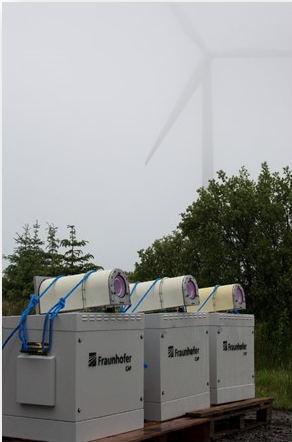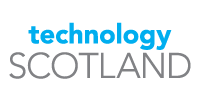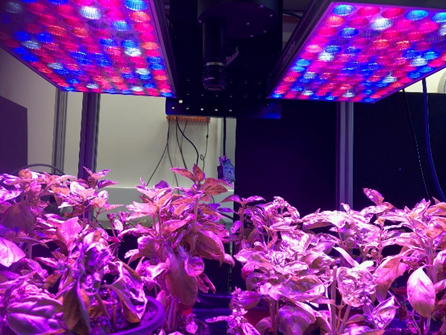The journey to a sustainable future is a highly important one, not just across Scotland, but across the whole world.
Ahead of the upcoming COP26 meetings being held in Glasgow in November, we are running a weekly blog series exploring the role of technology in achieving net zero with our Technology Scotland members.
Across the coming weeks, we will be hearing from a wide range of our members on a variety of climate focused topics; taking a deep dive into some of the innovative products created to combat climate change with project focused blog pieces as well as thought-pieces where we will hear from industry experts on the future of technology and its potential applications as we move forward towards a more sustainable future. Plus lots more!
This week we hear from Simon Andrews, Executive Director at Fraunhofer CAP, on the role of photonics tools in net zero and some of the interesting climate focussed projects Fraunhofer CAP have been involved in.
The role of photonics tools in net zero
The moral imperative of the race to Net Zero is not in doubt. Like many others Fraunhofer UK has signed up to the SME Climate Hub and we are actively reducing our carbon footprint. Aside from what we do about our own operations, we are also engaged in helping others develop the photonics tools and techniques which can address climate change more quickly. This is also an economic opportunity and the rise in green tech, green investment funds1, public and private confirms this incentive.
The poster children of photonics contributions to climate change are of course photovoltaics and LED lighting. These can potentially deliver savings of 119 and 17 Gigatons of CO2 respectively according to Drawdown2. The drawdown project gives further clues of where our sector’s technologies can have great impact.
 At Fraunhofer CAP we have developed (in InnovateUK supported projects) a suite of LiDAR tools for monitoring the wind. The incumbent technology is the cup anemometer which takes a single point reading of the wind and has nothing to say of veers and sheers or explain the complex features of the wind which landscapes generate. Even in offshore settings the wind has great complexity over the 100m+ diameter of large turbines. Indeed, the wind can be going in opposite directions at different places across the broad sweep of the blades.
At Fraunhofer CAP we have developed (in InnovateUK supported projects) a suite of LiDAR tools for monitoring the wind. The incumbent technology is the cup anemometer which takes a single point reading of the wind and has nothing to say of veers and sheers or explain the complex features of the wind which landscapes generate. Even in offshore settings the wind has great complexity over the 100m+ diameter of large turbines. Indeed, the wind can be going in opposite directions at different places across the broad sweep of the blades.
True 3D information about the wind allows the ideal siting of new turbines. Installed turbines need performance validation of the electricity output but can only be meaningful with a comprehensive, not point, understanding of the incoming wind. Of course, throughout their operational life, the yaw (direction in which the nacelle is pointing) and the angle of the blades, must be adjusted periodically to ensure the optimum energy extraction.
With an estimated 300,000 turbines around the world, a modest improvement of 2-5% increased output would save the planet almost as much as giving everyone a smart thermostat, or not having to build a further 5 major nuclear power stations. The economic case for rapid adoption of LiDAR is irrefutable.
We have also worked with Synaptec Ltd (a spin-out company from the University of Strathclyde) proving the value of more advanced cable monitoring in offshore cables. These cables can be easily damaged in the tides, strumming like guitar strings or hit by trawling nets. In a demonstration at partners EMEC (the European Marine Energy Centre in Orkney) we were able to show very early indication that a cable may be at risk. More than 80% of offshore energy insurance claims are in connection with cable damage. This technology could prevent the interruption of business and energy supply, saving time and energy for all. These cables typically contain fibre optics already. Adding the appropriate instrumentation more than pays for itself hundreds of times over in both money and CO2
Yet another example for photonics in efficiency is in vertical farming. With the potential to use 1/250th of the water of conventional farming, with zero pesticide use, and growth at night when electricity is cheaper, or generated completely from renewable sources, high intensity vertical farming allows crops to be grown so much closer to the consumers in large cities. Guilt-free year-round tomatoes and lettuce grown at the edge of your city is a major investment but has the potential to reduce CO2 enormously. The role of photonics may start here with photovoltaics perhaps, but crucially to maximise efficiency vision systems are used to analyse the growth cycle of plants and then only use the necessary wavelengths of LEDs to maximise growth. This targeted use of energy matches the already mature targeting of fertiliser and water.
From Agri-tech to offshore cable monitoring there is important work for the laser well beyond the more obvious photonics energy solution of solar cells.
In the gold rush, some made their fortune by selling shovels and jeans. In our rush to net-zero we must use the best tools to maximise the efficiency, longevity and sustainability of everything we do.
Simon Andrews
Executive Director
Fraunhofer UK Research Ltd
1 https://fortune.com/2021/09/28/this-time-is-different-the-resurgence-of-cleantech-vc-funding/
2 https://drawdown.org/solutions/table-of-solutions Scenario 2, aiming to limit warming to 1.5Celcius degrees.

